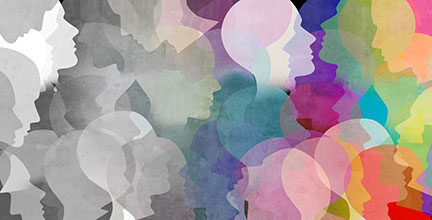
At about the same time last week that I walked through the gates of the Polynesian Cultural Center on the island of Oahu, the US Census Bureau released its preliminary results of the 2020 Census. “The United States grew significantly more diverse over the past decade, as the populations of people who identify as Hispanic and Asian surged and the number of people who said they were multiracial more than doubled.” The white category declined. Again.
[PLEASE CLICK ON THE TITLE ABOVE TO CONTINUE READING.]
|
That spike sent demographers scrambling. Was the reason simply that more multiracial babies were being born? Or that Americans were rethinking their identities? Or had a design change in the census form caused the sudden, unexpected shift? It turns out that all three reasons are factors, and relevant. * * * * * * Strolling through this corner of paradise, I learned that “Polynesians” form an ethnolinguistic group of closely related people who are native to Polynesia (islands in the Polynesian Triangle), an expansive region of Oceania in the Pacific Ocean covering thousands of miles. The Polynesian Cultural Center, one of Hawai’i’s top attractions, celebrates these peoples, their cultures, their history, their spirituality and their interconnectedness. Here, there is an acceptance of all peoples and a perceptible joy in interactions on a human level. * * * * * * Reporting on the census news, the New York Times interviewed Richard Alba, a sociologist who has studied the fluidity of racial categories, and quoted him as saying “the rise in multiracial Americans is a logical extension of the substantial mixing that has been happening for years in the United States”. The jump in this category is also partly attributed to the collection of more detailed data and analyzing it more deeply. Alba said he believed that part of the decrease in the white population was people switching from that category to the category of more than one race. “The census is doing a much better job at reflecting the growing complexity of the population,” he said. “They are really trying to acknowledge that the world is changing out there.” It’s about time. The census “data” will always be skewed and behind the trends. The “boxes” to be included are bitterly contested and negotiated. The interpretation of the results made to be political fodder. “Census categories are complicated, because race and its boundaries change over time based on shifts in culture and society. Some argue the census can leave the impression that race is a fixed, naturally occurring category that can be neatly counted.” But it wasn’t until 2000, that the Census Bureau even allowed anyone to check more than one box for race. Twenty years later, lines were added under these boxes where respondents could describe in more nuanced terms their racial backgrounds. And scanning technology advances enabled the capture and inclusion in far more detail of people’s written answers. Diversity is rising in 19 out of every 20 counties in this country. Nearly a majority of people under the age of 18 checked boxes other than white — a milestone that is the result of a substantially more diverse younger American population. Professor Jiménez said “you go to places that have had Minorities in the majority for a long time and the diversity is banal. “It’s not something they celebrate or panic over. It’s mostly just a fact of life.” Most people don’t even notice the diversity. As races and other categorizations blend, become diverse, and fall into meaninglessness reflecting the true melting pot we all are, perhaps then we can all gain the sense of not noticing the diversity. We can drop these categorizations, celebrate our mixed ethnicities and our cultures, those things that bind us together as humans, and just be Polymericans. |